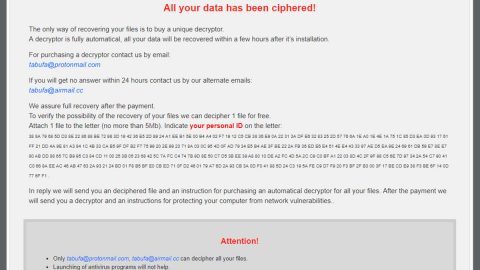Scareware is incredibly annoying. If you aren’t familiar with the term, then scareware refers to malicious software that frightens you into buying something that you don’t need. In most cases, scareware convinces you that you have a virus (often by installing a real virus on your computer), before pushing expensive antivirus software towards you. With these programs costing upwards of $300 in some cases, it’s important to protect your system from scareware as best you can.
Why is scareware so dangerous?
Obviously, it’s dangerous any time your PC is infected with a virus. However, scareware is particularly bad because it locks you out of performing even the most basic tasks on your computer. Once your PC is infected with a scareware virus, you may not be able to access the internet, turn on your antivirus scanner, or even open a Word document. Instead, the only thing you can do is purchase the overpriced antivirus software – which is often completely useless.
Put simply, scareware preys on the fear of computer users. Today, there are thousands of different scareware viruses floating around the web, which means that there has never been a better time to educate yourself on preventing scareware.
What is the Windows Foolproof Protector scareware virus?
A new scareware virus has been discovered floating around the web. It’s called the Windows Foolproof Protector virus, and it floods your PC with pop-ups, security alerts, and other traditional scareware methods. Due to the sudden influx of security alerts, even the most educated computer users are led to believe that they have been infected with a virus.
Windows Foolproof Protector isn’t very different from other major scareware threats, including the Windows Safety Toolkit, Windows Safety Checkpoint, and Windows Antivirus Care, all of which falsely use the Windows name in order to convince the user that they are official Microsoft software, which they are obviously not.
How to avoid scareware
Obviously, the best way to prevent scareware is to install good antivirus software. Unfortunately, if your computer has already been infected by scareware, then you’re going to need to take a different approach. In some cases, simply restarting your computer can give you access to your antivirus software again, but you’re going to need to act fast to prevent the scareware from taking hold.
If that doesn’t work, then you may need to insert the Windows 7 disk into the slot and repair your operating system. Unfortunately, if Windows system repair doesn’t work, then you may need to perform a full system restore.
If you’re running Windows 7, then you could be in luck: you can choose a system restore point that wipes out all of your program and operating system data while retaining your documents and personal files. This is an effective way to remove spyware and scareware without permanently losing your most important documents. For all other Windows users, you can try to access an earlier system restore point, which should preserve your data.










